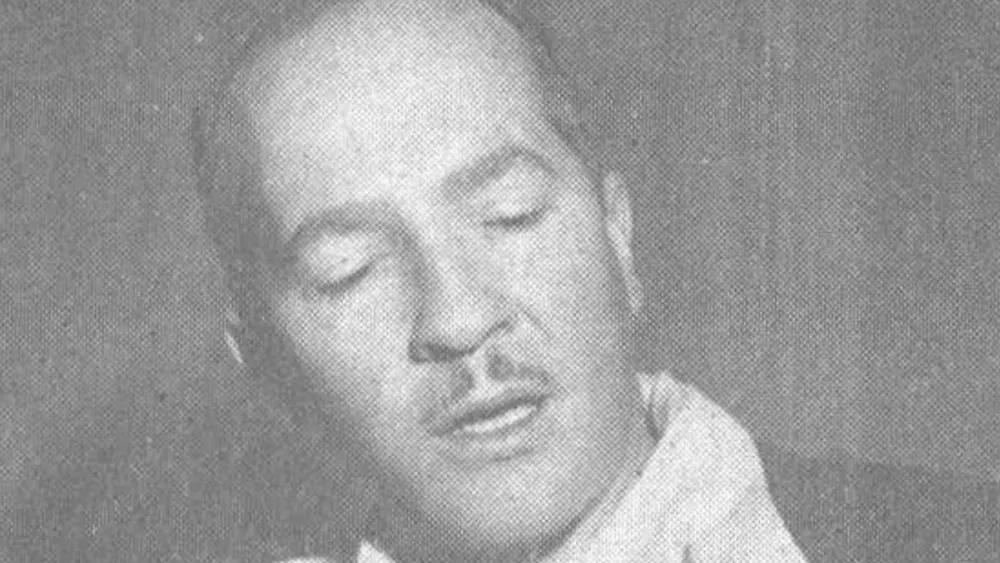Robert A Heinlein is a literary legend. While some authors stand out as innovators who push the limits of the human imagination, his name stands out among these giants. Heinlein is a literary legend whose works continue to enthrall readers, spark debate, and motivate writers and dreamers for centuries. Join us as we explore the life, legacy, and influence of the man who radically altered the field of science fiction.
Shaping Science Fiction and Challenging Norms
American science fiction author, naval commander, and aeronautical engineer Robert Anson Heinlein lived from July 7, 1907, until May 8, 1988. He was one of the first science fiction writers to emphasize the need for scientific accuracy. Therefore, he earned the title of “dean of science fiction writers” and contributed to developing the hard science fiction subgenre.
Both in fiction and non-fiction, his writing extols the qualities of critical thought and demonstrates respect for authority. His tales typically included shocking situations that called into question prevailing social mores. His work continues to influence science fiction and modern culture in general.
The amazing stories of adventure, scientific advancement, and technological progress. It filled the early 20th century and inspired young Heinlein. These formative years shaped his literary discoveries in the future. He combined scientific accuracy with unlimited creativity.
In 1974, Heinlein was recognized as the inaugural Grand Master of Science Fiction Writers. He earned four Hugo Awards for his books and seven “Retro Hugos.” These honored works were published before the establishment of the Hugo Awards and presented fifty years after their initial publication.
A Bold Move at Sixteen
The sixteen-year-old Heinlein lied about his age to join Company C of the Missouri National Guard’s 110th Engineer Regiment in Kansas City in January 1924. Heinlein applied for a position in a military academy because his family could not afford to pay for his college education.
Heinlein was initially denied admission to the United States Naval Academy at Annapolis. After he graduated from Kansas City Central High School in 1924, his older brother Rex was enrolled there. Rules forbade multiple family members from attending the academy simultaneously.
Instead, he enrolled at Kansas City Community College and started fervently requesting admission to the Naval Academy from Missouri Senator James A. Reed. In June 1925, he was accepted into the Naval Academy partly because of the Pendergast machine.
The Missouri National Guard released Heinlein when he held the rank of staff sergeant. Reed later revealed to Heinlein that he had gotten 100 letters of reference. Total—50 for Heinlein and 50 for other candidates—for candidacy to the Naval Academy.
Establishing New Ground
Heinlein’s writing career began in the 1930s when he submitted stories to the pulp magazines that fueled the burgeoning science fiction community.
At this time, he wrote stories that foreshadowed his future genius, laying the groundwork for his ascent to the status of a field pioneer.
His first tale to be published, “Life-Line,” investigated the idea of estimating a person’s lifetime using science; this foreshadowed his propensity for fusing actual science with science fiction.
In 1961, “Stranger in a Strange Land” marked a turning point in Heinlein’s career. Its blend of social criticism, philosophy, and mysticism represents a genre-defining shift.
The tale of Valentine Michael Smith, a human raised by Martians, pushed science fiction to its limits. Furthermore, it also explores issues of sexuality, religion, and social mores.
The counterculture movement of the 1960s adopted the novel’s spirit, which used it as a touchstone for challenging tradition and promoting independence.
Promoting Individualism and Responsibility
Individualism was a recurrent issue in Heinlein’s works, and it strongly impacted all of them. Moreover, his conviction in human responsibility and freedom highlighted his works. It includes “Starship Troopers” and “The Moon is a Harsh Mistress.” These literatures frequently examine the conflict between societal expectations and individual liberties.
Heinlein’s characters were not just props; they served as distillation devices for these concepts, making his books entertaining and thought-provoking.
His characters had many facets and were approachable; they frequently had to make difficult moral and ethical decisions while living in future settings.
This strategy made the epic dramas around readers more relatable by allowing readers to empathize with their challenges and triumphs.
Heinlein’s protagonists brought the exceptional into the realm of the everyday, whether it was the tenacious and relentless Podkayne in “Podkayne of Mars” or the legendary Lazarus Long in his “Future History” series.
Robert A Heinlein and his Courage
Heinlein did not hesitate to write about contentious issues, embracing themes that questioned accepted wisdom and sparked debate. Conservative groups occasionally criticized his investigations into politics, religion, and sexuality.
However, his willingness to discuss difficult subjects demonstrated his boldness as a writer. It solidly established him as a leader in exploring the limits of science fiction, and he discovered its capacity to elicit reflection and introspection.

A Viable Legacy of Robert A. Heinlein
The impact of Robert A Heinlein on science fiction is enormous. His influence goes beyond the stories he wrote and into the fundamental nature of the genre. Moreover, his tales straddled the line between the creatively audacious and the scientifically tenable. It prompts the authors to combine the real with the extraordinary.
His ideas are ageless and continue to attract new generations of readers, reminding us that the future is a blank canvas with limitless possibilities, only constrained by the capacity of human imagination.
Renowned as a beacon of invention, Robert A. Heinlein shines brightly in the world of science fiction.
The University of California at Santa Cruz’s McHenry Library’s Special Collections division is home to Heinlein’s archive.
The collection consists of artifacts, letters, pictures, and text drafts. The Robert A. Wood Library has digitized a sizable amount of the archive and made it accessible online.
As we commemorate his life and contributions, we salute the memory of a visionary whose thoughts have stood the test of time. It bridges the gap between the immediate now and the far-off vistas of the future.










